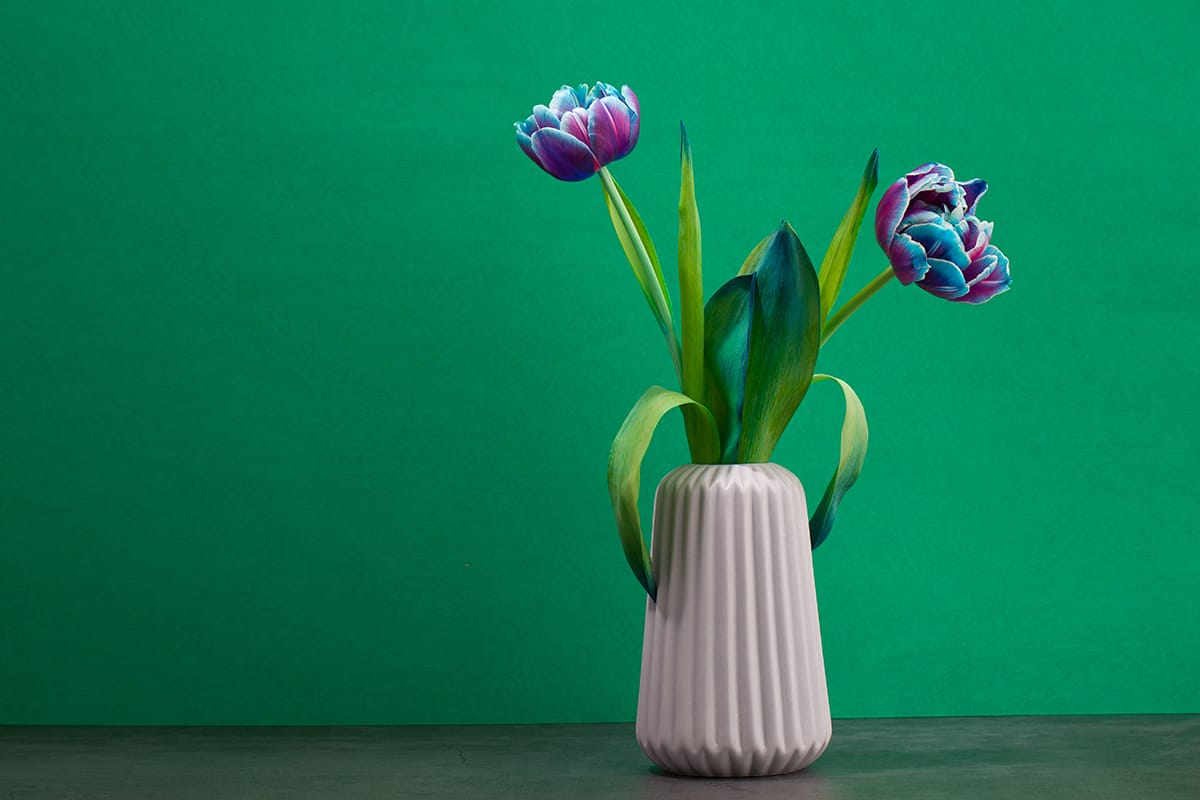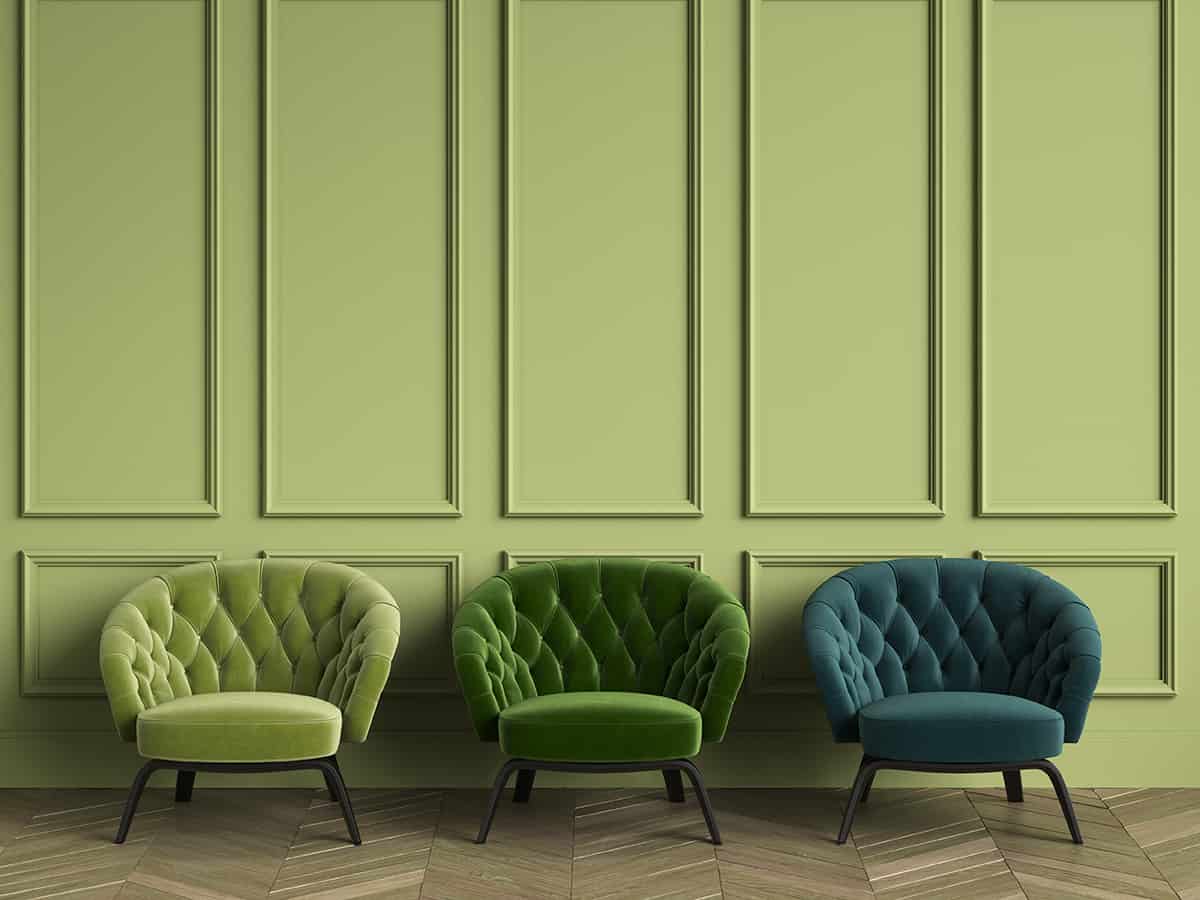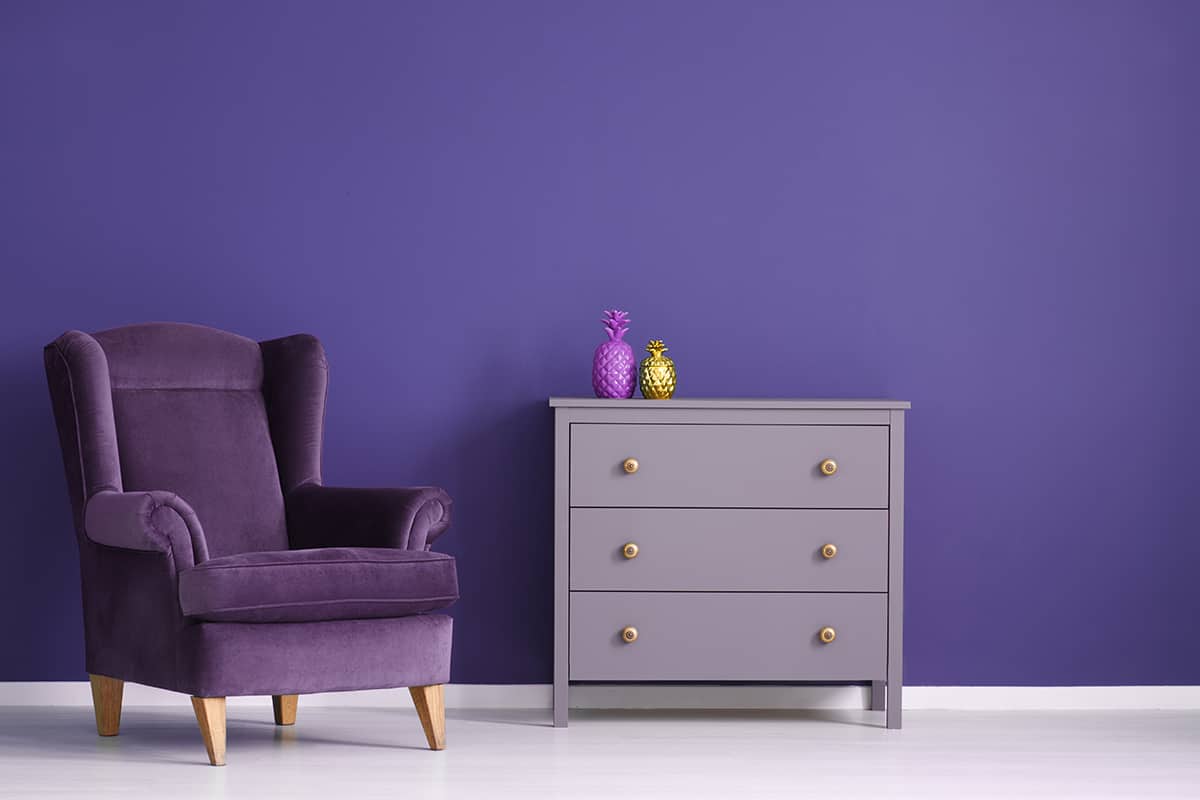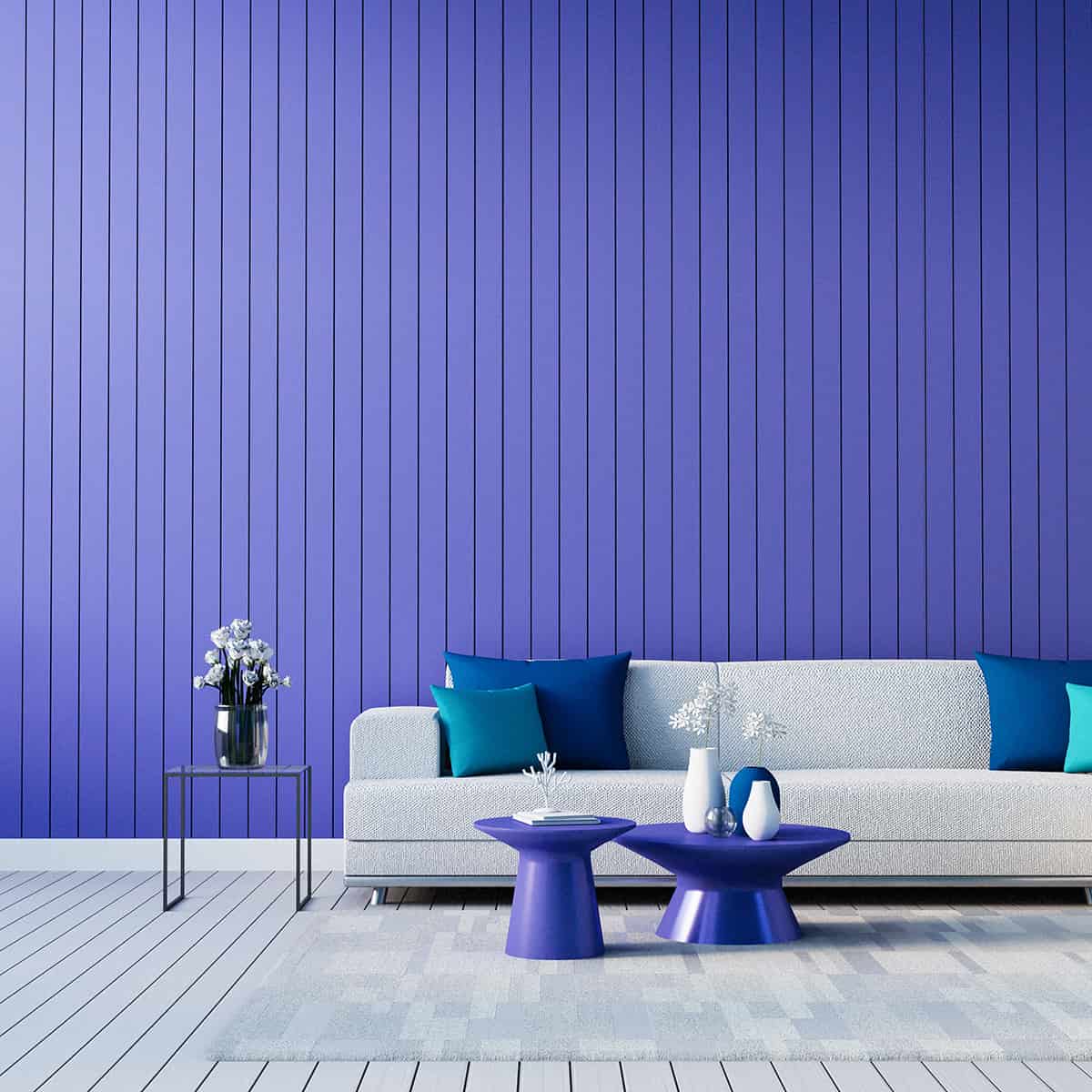Cool colors are enormously popular in home decor because they create energy in a room that feels fresh, invigorating, soothing, and clean.
They are also the best colors to use if you want to modernize a room and bring about a more contemporary color scheme. Here we investigate exactly what cool colors are, and how they can be used in interior design to achieve a range of looks.
What are Cool Colors?
Cool colors are those which sit on the cool side of the spectrum on the color wheel. Each basic color wheel contains 12 colors. This includes three primary colors (red, yellow, and blue), three secondary colors (green, orange, and purple), and six tertiary colors (red-orange, orange-yellow, yellow-green, green-blue, blue-purple, and purple-red).
All of the warm colors sit on one side of the color wheel, taking up approximately one-half of the wheel, while the cool colors sit on the other half of the wheel. Cool colors are colors which have a green, blue, or purple hue, while warm colors have a red, yellow, or orange hue.
Some colors are very obviously cool, such as navy blue, however other colors can be more tricky to identify as cool or warm, such as olive green, which has a blue hue but also contains a hefty amount of yellow from the warm side of the spectrum.
Examples of Cool Colors
Blue
Blue is a distinctly cool color because it is a primary color which is not made by mixing any other shades. It is entirely cool and is considered to be the ultimate cool shade in home decor.
Blue can create a variety of different atmospheres when used in interior design, for example, dusky pale blue with gray can read as crisp and clean, while navy blue can come across as elegant or dramatic in certain color schemes. However, the overwhelming sense of blue is that it is cool.
Green
Green is a cool secondary color which is created by mixing two primary colors; blue and yellow. Blue is a cool color and yellow is a warm color, so you might expect that green could read as cool or warm, but in the vast majority of cases, it comes across as a cool shade. Green is known as an earthy, refreshing, and revitalizing color, so it works brilliantly in a range of color schemes.
If you want a space to feel fresh and crisp, inspired by nature, or linked to the outdoors, then you can’t go wrong with green. Green is also believed to be the color that the human eye adjusts to most easily, so it is an untroubled color to be around, putting minimal stress on our brains. If you add a hefty amount of yellow to green, you will wind up with a color that can be perceived as cool or warm depending on the lighting and the other colors around it.
For example, when you add a high proportion of yellow to green, you can get olive green. When teamed with brown accessories, olive green works as a cool shade because it is cool compared with the much warmer olive green. However, when paired with blue or cool gray, the olive green will read as warm because it is warmer than the other cooler colors nearby.
Purple
Purple is another cool secondary color achieved by mixing two primary colors; red and blue. As red is warm and blue is cool, the resulting purple shade could be perceived as warm or cool depending on the proportion of red in the mix, however in the vast majority of cases, purple will be perceived as cool, because any color that has blue hues will read as cool.
Purple can feel refreshing and energizing in some scenarios, for example, Lite Lavender paint by Sherwin Williams in a bedroom with white-washed wooden floorboards and crisp white bed linens. It can also feel bold and dramatic, for example, Brassica by Farrow & Ball has a sophisticated energy that is rich yet cooling.
How to Identify a Cool Color
Some colors are very obviously cool, such as blue, or blue-toned gray. Other colors can be more tricky, especially secondary and tertiary colors which have a mixture of both warm and cool tones. The easiest way to determine if a color is cool is to figure out if it has blue tones. Any color that has blue tones should be considered cool, even if warm tones are also present.
For example, despite green being a result of mixing cool blue and warm yellow, the fact that blue is present makes green a cool color. When you see a color and want to identify if it is warm or cool, imagine a color wheel in your mind and envision where on the wheel the color would fall.
If it is on the side of the color wheel with blues, greens, and purples, then it is a cool color. If it falls on the side of the color wheel with oranges, reds, and yellows, then it is a warm color.
Using Cool Colors in Home Decor
Cool colors are those which are associated with a soothing or refreshing energy, such as blue skies, turquoise ocean waters, leafy green rainforests, and mossy green mountainsides. The effect of using these colors in home decor is that our mood can be altered, for example, a lime green room could help us to feel refreshed and revitalized, while a pale blue room can help to bring about a calming energy.
By contrast, warming colors are those associated with heat and light, and therefore they are great for creating a cozy and warming effect.
Cool colors can be used in many ways in home decor, depending on your style and the type of atmosphere you want to allude to, as well as the space and natural light in the room you are working on.
Cool colors for a clean feel
There are certain spaces in the home where a clean feel is the ultimate goal, for example, in a kitchen, bathroom, or even a bedroom or dining space. Clean energy is best achieved using cool colors because they can create a crisp look that you won’t achieve with warm shades. For a crisp and clean look in a kitchen, opt for a cool shade of off-white on your cabinets, such as Paper White by Benjamin Moore.
This is an off-white with blue-gray undertones, creating a fresh and cool look in both warm light and low light. Pair this with a pure white countertop and a muted blue color on the walls, such as Yarmouth Blue by Benjamin Moore. This is an icy blue color with a slightly gray hue, creating an atmosphere that feels clean and crisp, and a mood that is calming.
Cool colors for a refreshing feel
For refreshing energy in home decor, green is always the best color to use. Green is linked with nature and spring and the arrival of fresh growth and new beginnings. Because of this, it never fails to make a space feel invigorating and restorative. Refreshing energy can work well in any room, but it is becoming more and more popular in living rooms and kitchens.
What could be more refreshing than Refreshing Green from Valspar, which is a minty color named after the energizing energy it creates in a room? This would work beautifully alongside dusky pink in a bathroom for an art deco vibe or on the walls of a living room with white cotton sofas and plenty of houseplants for a fresh and fortifying experience.
Cool colors for an earthy feel
Earthy colors can be warm or cool, typically encompassing shades of green, blue, brown, beige, and gray. For a cool yet earthy vibe in a room, opt for blue-toned gray shades, which are reminiscent of stony beaches or rocky mountains, and green shades, which mimic the colors found in dense pine forests or rolling, grassy hills.
Cool colors work really well when used in conjunction with warm colors for a complimentary look, so in a room with an earthy theme, you can paint the walls in gray and opt for green soft furnishings, then add some earthy warm touches such as a beige rug or vases in brown stoneware. This will create a muted contrast that helps the colors to pop while also adding a sense of balance to the space.
Cool colors for a soothing feel
Blue is the ultimate soothing color, with associations of tranquil waters and clear skies. In a spa-themed bathroom or a calming living room, use pale shades of cool blue, such as Smoke by Benjamin Moore.
This is a gray-blue shade with green undertones, making it an excellent choice for achieving a sense of calm in home decor. Pair it with gray marble tiles and fluffy white towels for a crisp edge, or consider mint green subway tiles to give the room a softer feel.










